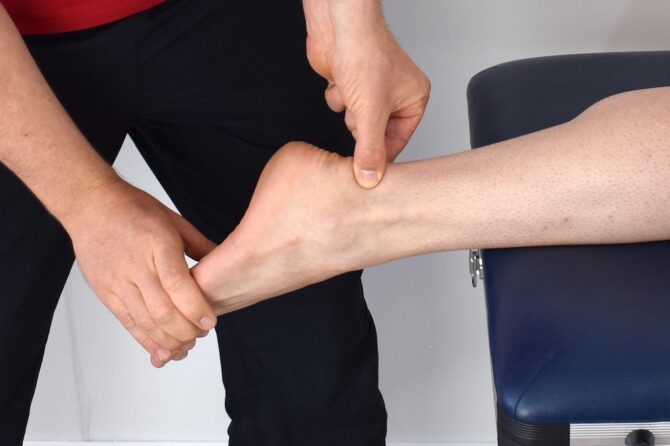
The Evolving Treatments of Achilles Tendonitis
What is Achilles Tendonitis?
The Achilles is the largest and strongest tendon not just in your legs but in your whole body. When this tendon becomes damaged and inflamed, it causes pain known as Achilles tendonitis. Damage most often happens when too much stress is put on the tendon too quickly or too often. Achilles tendonitis may result from sudden increases in activity intensity or frequency. The tendon can’t keep up with the strain, leading to microtears in the tendon fibers. Over time, the tendon may thicken permanently, causing Achilles tendinosis which presents with chronic pain. The Achilles tendon also has a possibility of tearing or rupturing.
Symptoms & Diagnosis
The most obvious symptom of Achilles tendonitis is pain in the back of the ankle or leg. You may also experience tenderness in the calf. Over time, an inflamed Achilles tendon will enlarge and can develop nodules inside the tendon.
Diagnosis is made through a physical evaluation during which your FAAWC surgeon will access your range of motion and inspect the ankle and foot for further defects or issues. X-rays are commonly used to evaluate the calcification of the tendon over time.
Treatment
It used to be that the options for treating Achilles tendonitis were limited. Today, advancements in medicine give you additional treatment modalities that improve healing and accelerate recovery. Your specific treatment plan will be determined based on how long symptoms have been present and how badly the tendon is damaged.
Any Achilles tendonitis plan should start with conservative at-home treatment such as using anti-inflammatory medications or topical pain relievers. These days, you can achieve many of the same anti-inflammatory and pain-relieving benefits by using CBD products, which is a great way to add a more natural option to your treatment plan. Icing is also important for Achilles tendonitis and should be done for 20 minutes of each waking hour.
For patients experiencing severe pain or damage, immobilization may be required. Today, patients can maintain an active recovery by being placed in a walking boot rather than a below-the-knee cast, though your provider will ultimately determine which is appropriate.
Therapy is a must for Achilles tendonitis and your options extend far past traditional strengthening and stretching. While those exercises are important as part of a physical therapy plan, other available therapies include soft tissue massage, gait training, ultrasound therapy, cupping, and laser therapy. Each has its own benefits and your provider can help match you to the therapy that will best suit your recovery needs.
If it comes down to a surgical solution, you have more options there as well. Whether your surgeon is removing damaged tendon, shaving down a troublesome bone spur, or lengthening your calf muscles, all of these procedures have evolved over time. This results in an 80-90% success rate for Achilles tendonitis surgery.
If you’re experiencing Achilles pain, discontinue all strenuous activity and see your podiatrist as soon as you can. The FAAWC offers walk-in hours from 12-3 pm every Friday, so there’s no such thing as “no openings.” Come see us about your Achilles tendonitis today.
Leave a reply